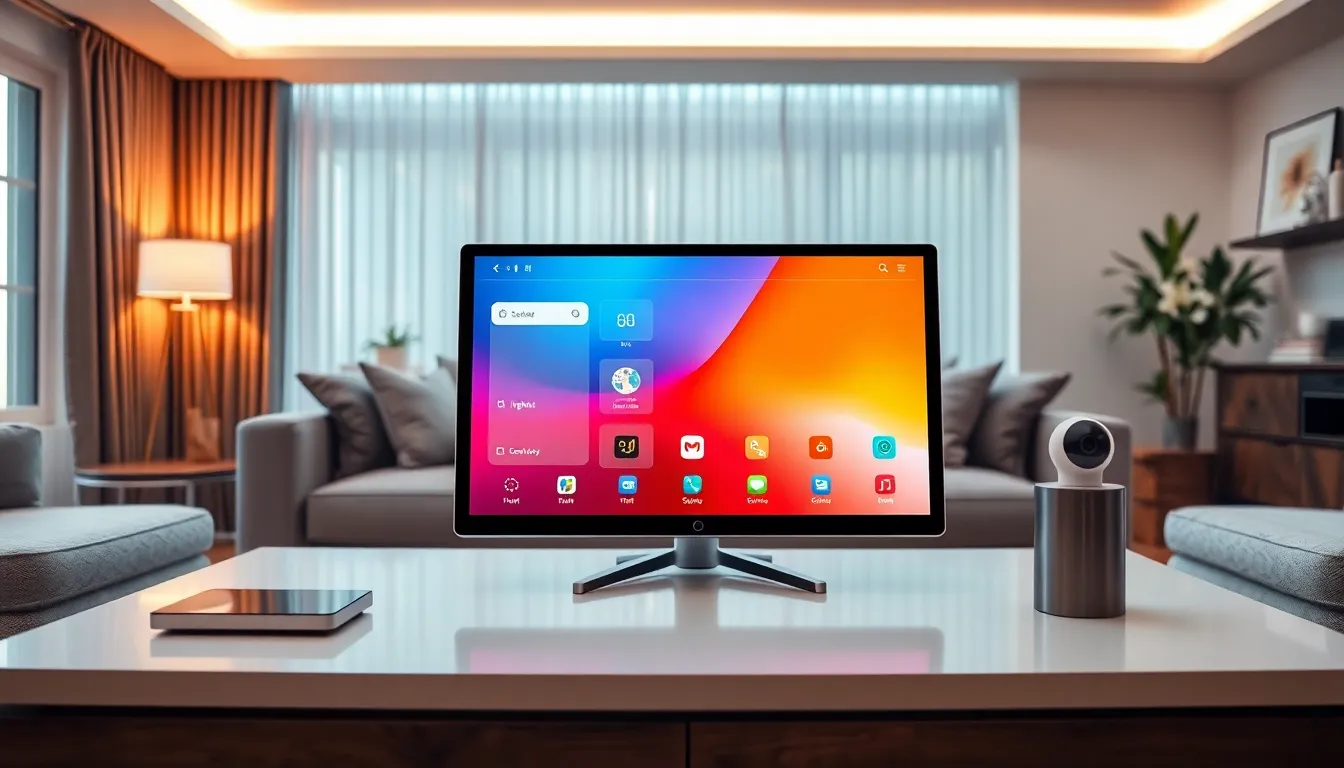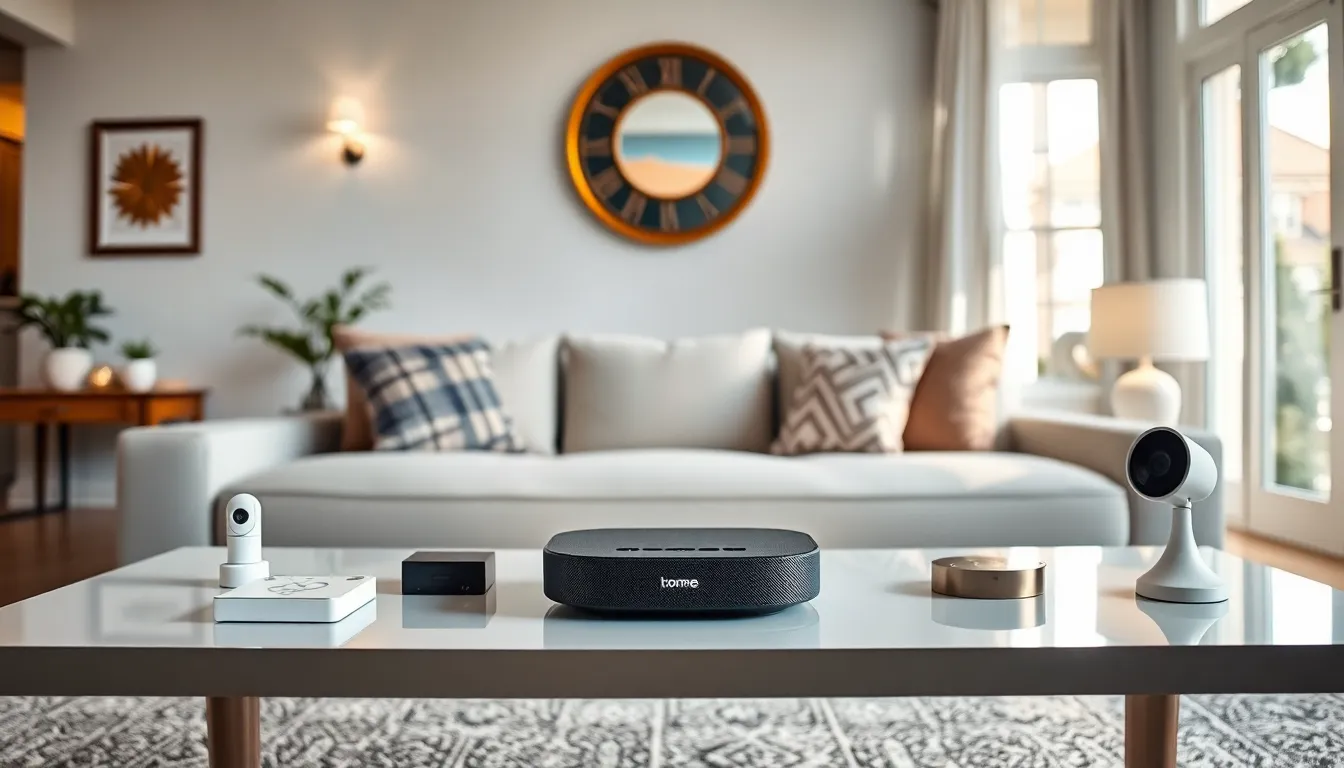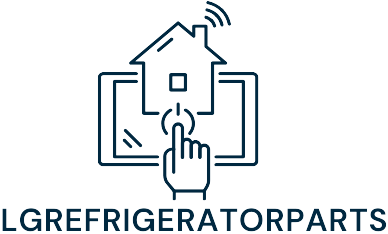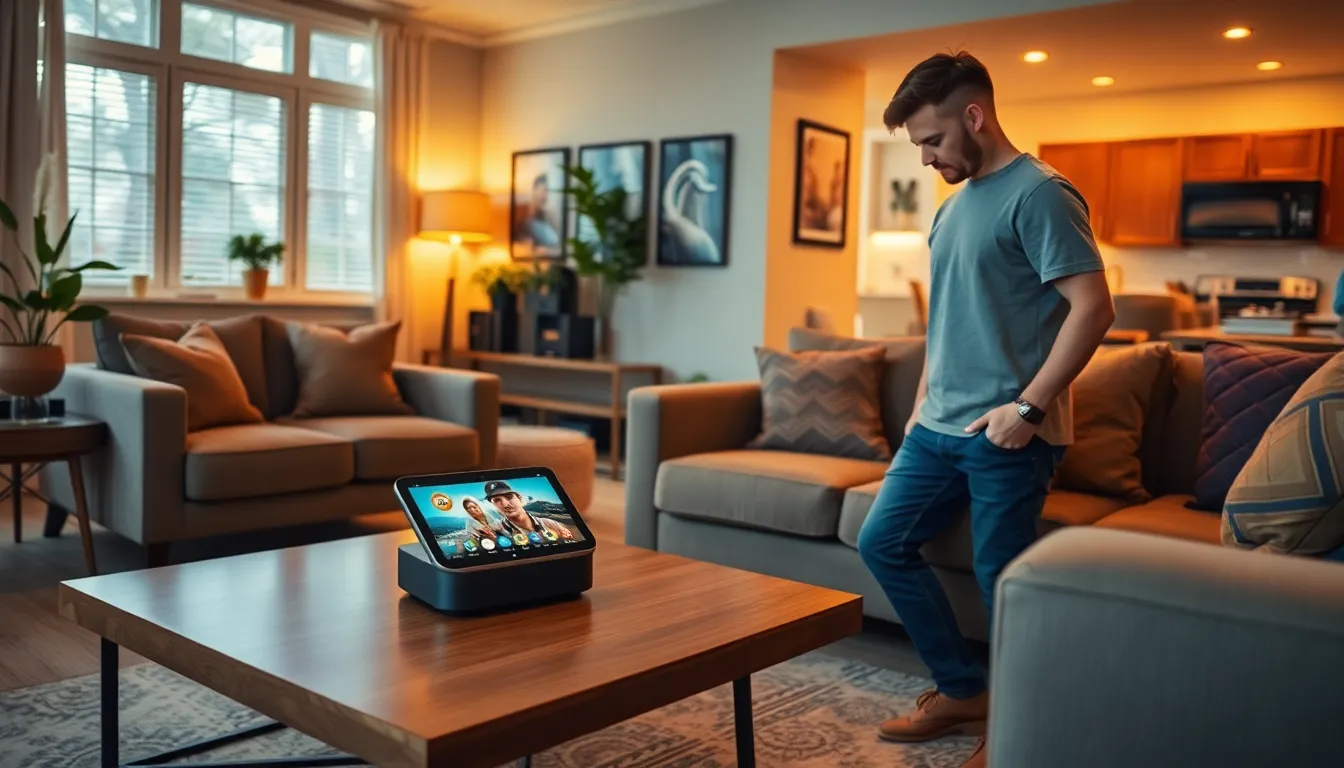Table of Contents
ToggleIn a world where multitasking is the name of the game, touchscreen home hubs have emerged as the ultimate sidekick for modern living. Imagine controlling your lights, music, and even your coffee maker with just a tap—it’s like having a personal assistant who doesn’t need coffee breaks. These sleek devices not only simplify daily tasks but also add a touch of futuristic flair to any home.
Overview of Touchscreen Home Hubs
Touchscreen home hubs serve as the central control point for smart home ecosystems. Users can manage interconnected devices with a simple touch on the screen. These hubs often integrate with smart lights, thermostats, security cameras, and other home automation systems. Control and customization become accessible, making everyday tasks more efficient.
Most touchscreen home hubs feature voice control as an added convenience. This hands-free operation allows users to manage home settings without physically interacting with the device. Features like scheduling, scene customization, and real-time notifications enhance user experience.
Many popular brands dominate the market, each offering unique functionalities. Google Nest Hub provides robust voice assistant features, while Amazon Echo Show emphasizes strong integration with Alexa. Both options deliver high-quality displays that show weather updates, news briefings, and even video calls.
Compatibility with various smart home devices remains crucial. Most hubs support protocols like Zigbee and Z-Wave, facilitating seamless communication between different brands. This interoperability allows users to create a cohesive smart home environment without compromising on device variety.
Design plays a significant role in the appeal of touchscreen home hubs. Many models feature sleek, modern aesthetics that complement home decor. Choosing the right hub involves considering size, display quality, and additional features that meet individual needs.
Touchscreen home hubs simplify smart home management by combining control, convenience, and connectivity. Each new model introduces more innovative features that cater to evolving user preferences.
Key Features of Touchscreen Home Hubs


Touchscreen home hubs come equipped with several standout features that make them indispensable for modern households. These devices blend functionality with usability, enhancing control over smart home environments.
User Interface and Design
User interfaces of touchscreen home hubs prioritize ease of use. Most hubs feature intuitive layouts that allow users to navigate seamlessly through functions. Eye-catching displays often showcase vibrant colors, ensuring visibility from various angles. Many brands focus on sleek, modern designs that fit elegantly into home decor. Touch responsiveness is typically swift, offering instant feedback for every interaction. In addition, customizable home screens enable personalization, allowing users to choose preferred layouts or widgets.
Smart Home Integration
Smart home integration defines the core function of touchscreen home hubs. Numerous devices support protocols like Zigbee and Z-Wave, ensuring compatibility with various brands. Connection to security cameras, smart lights, and thermostats enhances control over home environments. Many hubs provide streamlined management of multiple devices, consolidating tasks into a single interface. Users can also automate routines based on their schedules or preferences, simplifying daily tasks. Real-time notifications inform users of security alerts or system updates, enhancing peace of mind and efficiency in managing smart homes.
Benefits of Using a Touchscreen Home Hub
Touchscreen home hubs provide users with numerous advantages that enhance modern living. These devices simplify everyday tasks, improve control over smart devices, and elevate the overall home experience.
Convenience and Accessibility
Convenience defines touchscreen home hubs. Users can control numerous smart devices, such as lights and thermostats, with just a finger tap. Device interaction remains seamless, offering voice control options for hands-free management. For individuals with mobility challenges, these hubs serve as essential tools, allowing effortless access to smart home functions from various locations within the home. Notifications about security, weather updates, or reminders display conveniently on vibrant screens. Access to applications for music, recipes, or video calls adds to their functionality, ensuring users remain connected and entertained.
Centralized Control
Centralized control sets touchscreen home hubs apart. They function as command centers for an entire smart home ecosystem, integrating various devices through a single interface. Compatibility is vital; leading hubs support communication protocols like Zigbee and Z-Wave. This capability connects lights, cameras, and more without hassle, streamlining operations for users. Customizable dashboards enable quick adjustments, while the ability to create personalized routines enhances daily living. Smart technologies often include automation features, allowing pre-set schedules for heating or cooling, saving energy and optimizing comfort. Users benefit from managing their entire smart home ecosystem at their fingertips, fostering a truly connected lifestyle.
Popular Touchscreen Home Hubs on the Market
Several touchscreen home hubs offer outstanding functionalities that enhance smart home experiences. Users can streamline their daily tasks through advanced features and intuitive designs.
Top Models Reviewed
Google Nest Hub Max commands attention with its impressive 10-inch display and built-in camera for video calls. Amazon Echo Show 10 features a rotating screen that follows users, making it versatile for various spaces. Lenovo Smart Display stands out with its sleek design and high-quality audio, perfect for music lovers. Another notable option is the Samsung SmartThings Hub, which excels at managing diverse smart devices seamlessly. Each model caters to unique user preferences while maintaining essential smart home capabilities.
Comparison of Features and Prices
Prices vary substantially among popular touchscreen home hubs. The Google Nest Hub starts around $99, while the Amazon Echo Show 10 is priced at approximately $249. Users can find Lenovo Smart Display models ranging from $149 to $199, depending on size and features. Samsung SmartThings Hub, at about $99, emphasizes compatibility with numerous smart devices. Features such as screen size, audio quality, and compatibility with smart home protocols are critical factors influencing users’ purchase decisions.
Touchscreen home hubs represent a significant leap in smart home technology. They not only offer convenience and control but also enhance the overall aesthetic of living spaces. With their ability to integrate multiple devices and provide a user-friendly interface, these hubs are becoming indispensable for modern households.
As technology continues to evolve, users can expect even more innovative features and improved functionality from future models. This ongoing development ensures that touchscreen home hubs will remain at the forefront of smart home management, making everyday life simpler and more connected. Embracing these devices can lead to a more efficient and enjoyable home environment.



